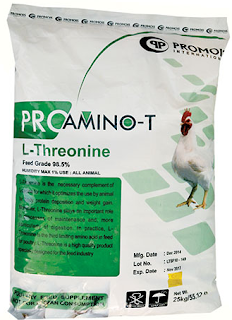Do you own a poultry farm and want to make a lucrative business? Therefore, your poultry chickens need highly nutritional food and supplements. The right amount of minerals, vitamins is important for healthy broilers. Organic feed stuffs are the mainly provided for broilers’ diet. However, studies have shown that some anti-nutritional factors are also present in those feed, like phytic acid. The phytic acid consists of approximately 28.2% phosphorus (P) and has an anti-nutritional component that makes P unavailable to animals, by complexing with other nutrients. Typically, the research shows that only 30% of the P reaches to the broilers. According to a study, the bio availability of the P is 33% in the corn and 32% in the soybean meal.
Inclusion of Phytase enzyme
The hydrolysis of phytic acid, an organic and indigestible form of phosphorus that can be found in grains and oil seeds, can be catalyzed by a phytase. It is a type of phosphatase enzyme, which releases a usable form of inorganic phosphorus. Over the periods, the microbial phytase has been used increasingly in poultry feed stuffs, to fight against the phosphorus (P) pollution of the environment. This feed enzyme has the capacity to release phytate-bound P and reduce P excretion and make the poultry feeds highly nutritional for the birds.
Phytase is the most widely used feed enzyme around the world, which is included in 90% of poultry feed and 70% of pig - diets.
The addition of Phytase Enzymes in Poultry Feed for enhancing the nutrient performance and utilization by countering the negative impact of targeted substrates has now become the commonplace in the recent decade. Much of the poultry diets are formulated with maize soybean as the elementary raw material. Due to rise in prices and the non-availability of the ingredients, nutritionists are now formulating the diets with the agro-industrial non-conventional feed resources and the by products. In spite of the accessibility of the agro-industrial by products in large quantities at cheaper prices, their presence in the poultry diets is limited due the presence of the incriminating factors.
Inclusion of Phytase enzyme
The hydrolysis of phytic acid, an organic and indigestible form of phosphorus that can be found in grains and oil seeds, can be catalyzed by a phytase. It is a type of phosphatase enzyme, which releases a usable form of inorganic phosphorus. Over the periods, the microbial phytase has been used increasingly in poultry feed stuffs, to fight against the phosphorus (P) pollution of the environment. This feed enzyme has the capacity to release phytate-bound P and reduce P excretion and make the poultry feeds highly nutritional for the birds.
Phytase is the most widely used feed enzyme around the world, which is included in 90% of poultry feed and 70% of pig - diets.
The addition of Phytase Enzymes in Poultry Feed for enhancing the nutrient performance and utilization by countering the negative impact of targeted substrates has now become the commonplace in the recent decade. Much of the poultry diets are formulated with maize soybean as the elementary raw material. Due to rise in prices and the non-availability of the ingredients, nutritionists are now formulating the diets with the agro-industrial non-conventional feed resources and the by products. In spite of the accessibility of the agro-industrial by products in large quantities at cheaper prices, their presence in the poultry diets is limited due the presence of the incriminating factors.



